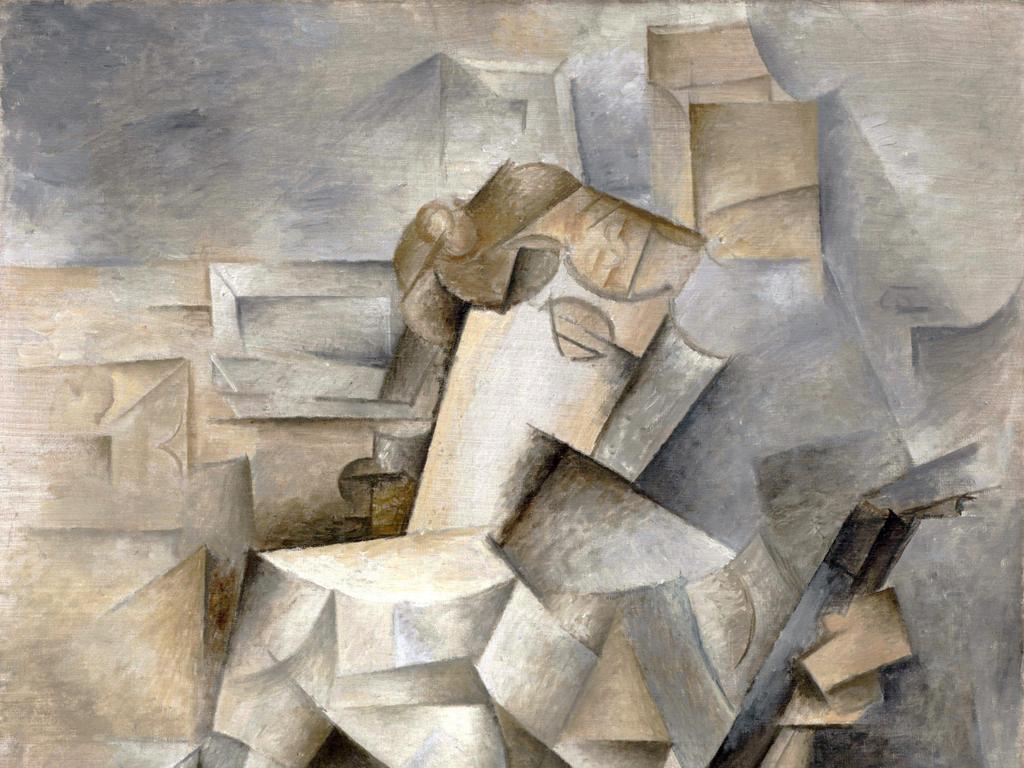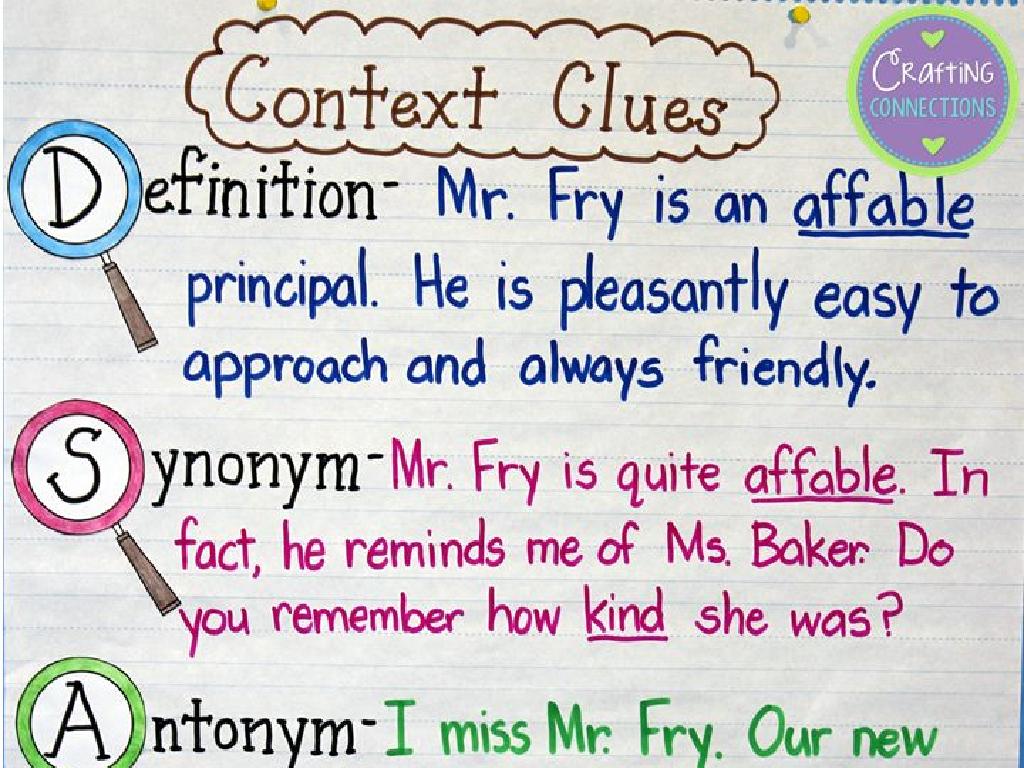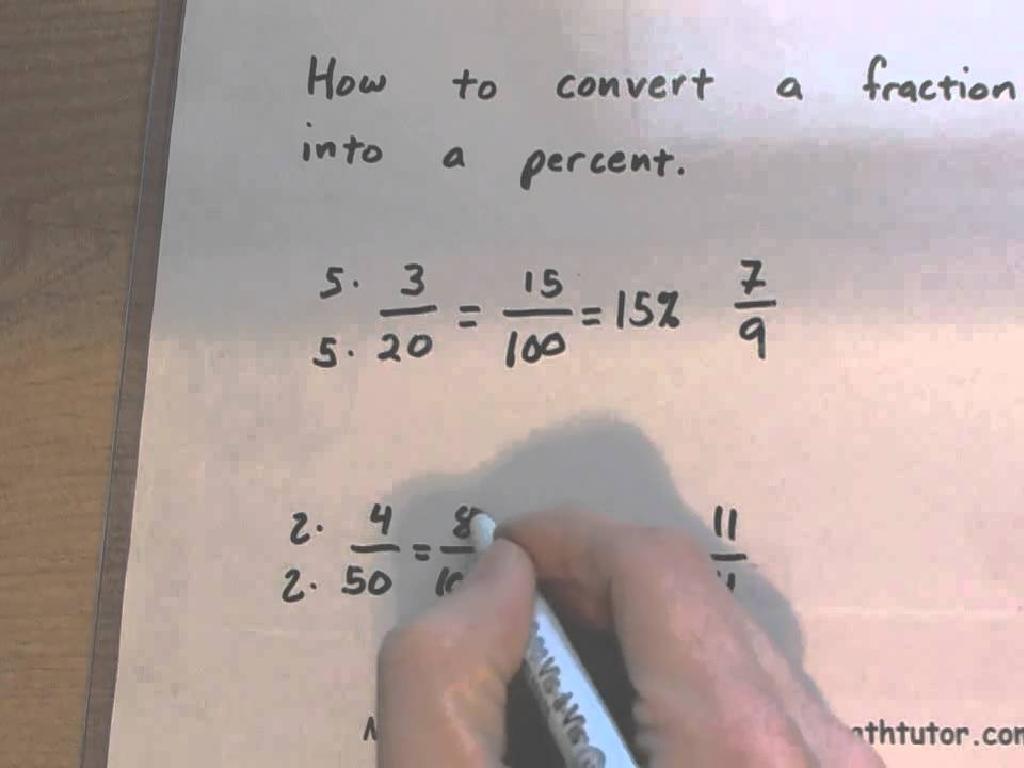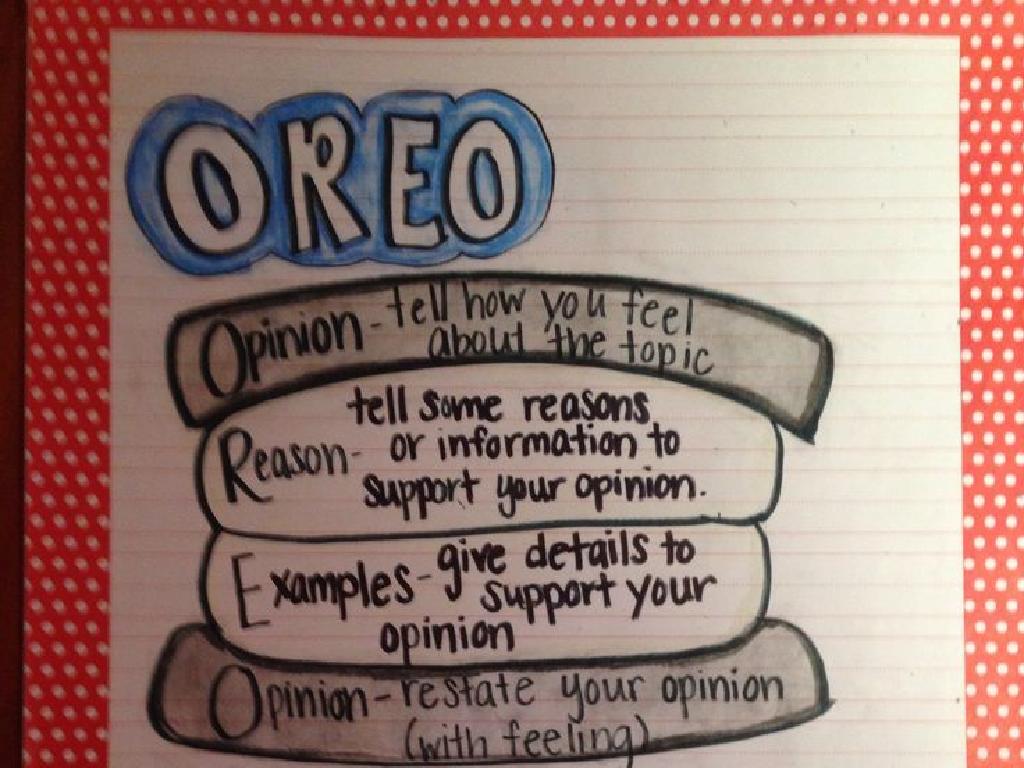Gcf And Lcm: Word Problems
Subject: Math
Grade: Sixth grade
Topic: Number Theory
Please LOG IN to download the presentation. Access is available to registered users only.
View More Content
Exploring GCF and LCM in Number Theory
– What is the Greatest Common Factor?
– GCF is the largest number that divides two or more numbers without a remainder.
– Discovering the Least Common Multiple
– LCM is the smallest number that two or more numbers can divide into without a remainder.
– Numbers’ building blocks: prime factors
– Understanding prime factorization is key to finding GCF and LCM.
– Real-world applications of GCF and LCM
– From scheduling to tech, GCF and LCM streamline problem-solving.
|
This slide introduces students to the concepts of Greatest Common Factor (GCF) and Least Common Multiple (LCM) as fundamental tools in number theory. Begin by explaining GCF as the highest number that can divide a set of numbers evenly, using examples like finding the GCF of 12 and 18 (which is 6). Then, introduce LCM as the smallest number that a set of numbers can all divide into, such as the LCM of 4 and 5 being 20. Emphasize the importance of prime factorization in finding both GCF and LCM. Conclude by discussing how these concepts apply to real-world scenarios, such as determining the optimal time for event scheduling or in computing processes. Encourage students to think of other areas where GCF and LCM are useful. The slide aims to provide a clear and engaging overview that will prepare students for solving word problems involving GCF and LCM.
Understanding GCF in Word Problems
– GCF stands for Greatest Common Factor
– Largest factor shared by numbers
– Example: GCF of 12 and 16
– The GCF of 12 and 16 is 4, as both are divisible by 4
– Use GCF to solve problems
– Helps simplify fractions or combine items into groups
|
GCF, or Greatest Common Factor, is a foundational concept in number theory and is particularly useful in solving various mathematical problems, including word problems. It is the highest number that divides two or more numbers without leaving a remainder. For example, to find the GCF of 12 and 16, list the factors of each number (12: 1, 2, 3, 4, 6, 12 and 16: 1, 2, 4, 8, 16) and identify the greatest factor that appears in both lists, which is 4. Understanding GCF allows students to simplify fractions by dividing the numerator and denominator by their GCF or to determine the maximum number of groups that items can be divided into evenly. Encourage students to practice by finding the GCF of different sets of numbers and applying this knowledge to real-world scenarios.
Finding the Greatest Common Factor (GCF)
– List factors of each number
– Factors of 18: 1, 2, 3, 6, 9, 18
– Identify common factors
– Common factors of 18 and 24: 1, 2, 3, 6
– Choose the greatest common factor
– GCF of 18 and 24 is 6
|
When finding the GCF of two or more numbers, start by listing out all the factors of each number. Factors are whole numbers that can be multiplied together to produce the original number. Once the factors are listed, identify which factors are common to all lists. The greatest of these common factors is the GCF. For example, to find the GCF of 18 and 24, list the factors of each number, identify the common factors (1, 2, 3, 6), and then choose the greatest among them, which is 6. This concept is crucial for simplifying fractions and solving word problems involving quantities with shared attributes.
Understanding LCM in Word Problems
– Define Least Common Multiple (LCM)
– LCM is the smallest number that two or more numbers can divide into evenly.
– LCM: Smallest common multiple
– It’s the lowest multiple shared by numbers.
– Example: LCM of 3 and 4
– 3 multiples: 3, 6, 9, 12; 4 multiples: 4, 8, 12, 16. LCM is 12.
– Applying LCM in real scenarios
– Use LCM to solve problems like scheduling or syncing events.
|
LCM, or Least Common Multiple, is a foundational concept in number theory, essential for solving various mathematical problems, especially word problems. When introducing LCM, clarify that it’s the smallest number into which all the given numbers can evenly divide. Use concrete examples, such as finding the LCM of 3 and 4, to illustrate the process of listing multiples and identifying the smallest common one. Emphasize the practical applications of LCM in real-life situations, such as determining the next time two events with different cycles will coincide. Encourage students to think of other scenarios where finding the LCM is useful.
Finding the Least Common Multiple (LCM)
– List multiples of each number
– If we have 4 and 5, list 4, 8, 12, 16, 20 and 5, 10, 15, 20, 25
– Spot the common multiples
– Look for numbers that appear in all lists: 20 is common for both
– Select the smallest common multiple
– The LCM of 4 and 5 is the smallest common number, which is 20
– Apply LCM to solve problems
– Use LCM to find when events at different intervals coincide, like traffic lights syncing
|
This slide introduces the concept of finding the Least Common Multiple (LCM) through a systematic approach. Start by listing the multiples of each number involved in the problem. Then, guide students to identify the multiples that are common to all lists. Emphasize the importance of choosing the smallest of these common multiples, as this is the LCM. Provide examples and encourage students to apply the concept of LCM to real-world problems, such as determining when two events with different periodic intervals will occur at the same time. This will help them understand the practical applications of LCM in daily life.
Solving Word Problems with GCF and LCM
– Apply GCF and LCM in problem-solving
– Use GCF to find what’s common in quantities
– Comprehend the question’s requirement
– Determine if the problem asks for greatest commonality or least common multiple
– Break down problems into manageable parts
– Divide complex problems into simpler steps
– Practice with real-world examples
– Apply concepts to scenarios like scheduling or sharing
|
This slide aims to equip students with strategies to tackle word problems involving Greatest Common Factor (GCF) and Least Common Multiple (LCM). Start by explaining the importance of identifying whether a problem requires GCF or LCM. Emphasize the need to understand the question thoroughly before attempting to solve it. Teach students to break down problems into smaller, more manageable parts to avoid feeling overwhelmed. Provide real-world examples such as determining the best schedule for events or dividing items into groups to illustrate the concepts. Encourage students to practice with additional problems and to discuss their approaches with peers for a deeper understanding.
Solving GCF Word Problems
– Carefully read the problem
– Find numbers for the GCF
– Identify all numbers involved in the problem
– Use GCF to solve the problem
– Apply the GCF to find a solution to the problem
– Check your answer
– Verify the solution fits the context of the problem
|
When solving word problems involving the Greatest Common Factor (GCF), it’s crucial for students to start by reading the problem thoroughly to understand what is being asked. Next, they should identify the key numbers in the problem that they need to find the GCF for. Once the GCF is found, students must use it to answer the question posed by the problem, ensuring that their answer makes sense in the given context. Finally, students should always check their answers to confirm they are correct. For example, if the problem involves finding the GCF of 18 and 24 to determine how many groups of items can be made, the GCF is 6, meaning 6 groups can be formed. Teachers should provide guidance on how to find the GCF and encourage students to practice with different sets of numbers.
Solving LCM Word Problems
– Comprehend the problem’s context
– Grasp the story or situation in the question
– Pinpoint numbers for LCM
– Determine which numbers’ least common multiple is needed
– Apply LCM to solve the problem
– Use the LCM to figure out the answer to the question
|
This slide is aimed at guiding students through the process of solving word problems that involve finding the least common multiple (LCM). Start by ensuring students understand the context of the problem; what is the scenario, and what is being asked? Next, help them identify the key numbers in the problem for which they need to find the LCM. Once the LCM is found, students should apply it to determine the solution to the problem. For example, if the problem involves two events that repeat at different intervals, finding the LCM will help determine when those events coincide. Encourage students to practice with real-world examples, such as scheduling or planning events.
Class Activity: Find Your Match!
– Pair up with a classmate
– Receive a unique word problem
– Collaborate to find GCF or LCM
– Use problem-solving skills to determine the greatest common factor or least common multiple
– Present your solution to the class
|
This interactive class activity is designed to promote collaboration and application of GCF and LCM concepts in word problems. Each pair of students will be given a different word problem that requires them to apply their knowledge of GCF or LCM to find a solution. For example, one pair might solve a problem involving scheduling events to find the LCM, while another pair might find the GCF to simplify a fraction. After solving the problem, students will present their solution process and answer to the class, fostering a learning environment where students can learn from each other’s problem-solving strategies. The teacher should prepare diverse problems in advance and ensure they cater to different difficulty levels to accommodate all students. Additionally, the teacher should circulate the room to provide guidance and ensure that each pair is on the right track.
Wrapping Up: GCF and LCM
– Recap GCF and LCM concepts
– GCF (Greatest Common Factor) and LCM (Least Common Multiple) are key in number theory.
– Real-world application of GCF and LCM
– Examples: Scheduling events, dividing goods, or arranging objects evenly.
– Homework: 10 word problems
– Solve 5 problems for each concept to strengthen your understanding.
– Practice makes perfect!
|
As we conclude today’s lesson, remember that GCF helps us find the largest number that can divide two or more numbers without a remainder, while LCM is the smallest number that is a multiple of two or more numbers. These concepts are not just theoretical; they are used in everyday situations such as planning events without conflicts or sharing items equally among a group. For homework, students will solve 5 GCF and 5 LCM word problems to apply what they’ve learned. Encourage them to think about how these concepts might appear in their daily lives and to practice diligently to master these skills.





